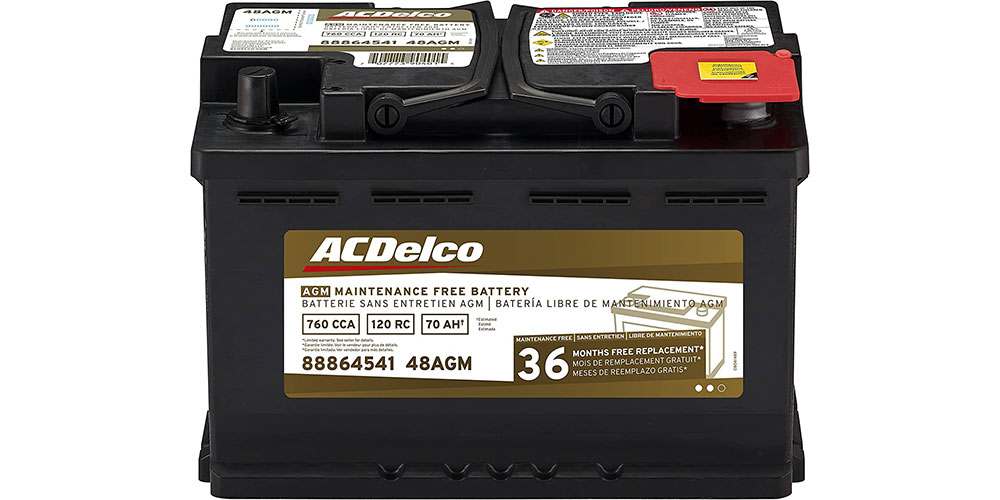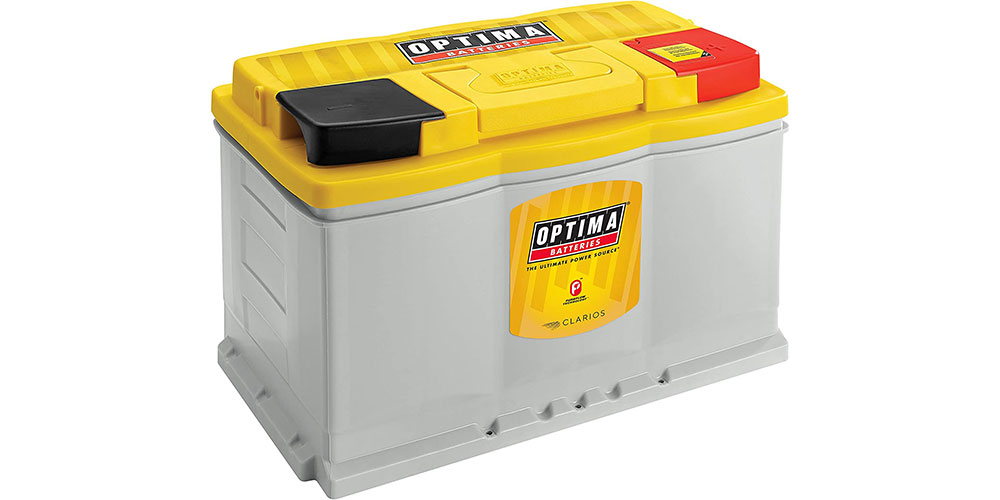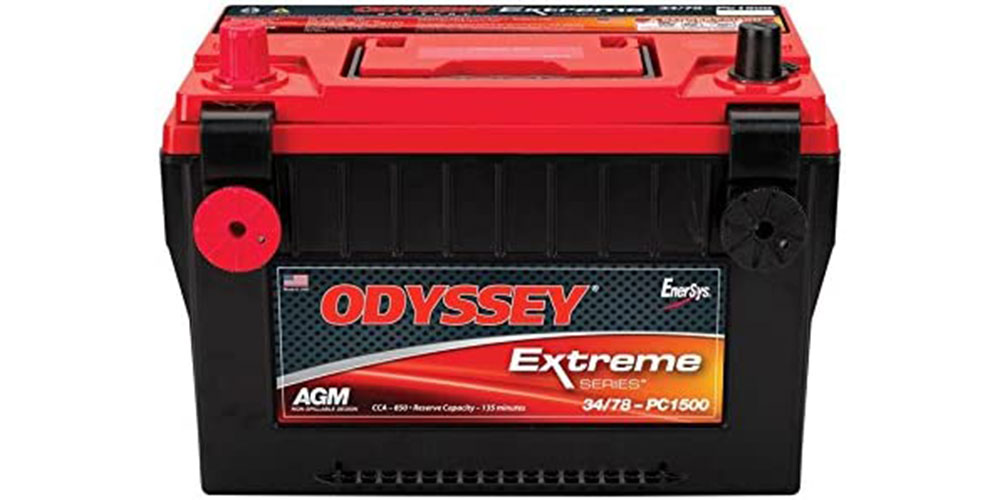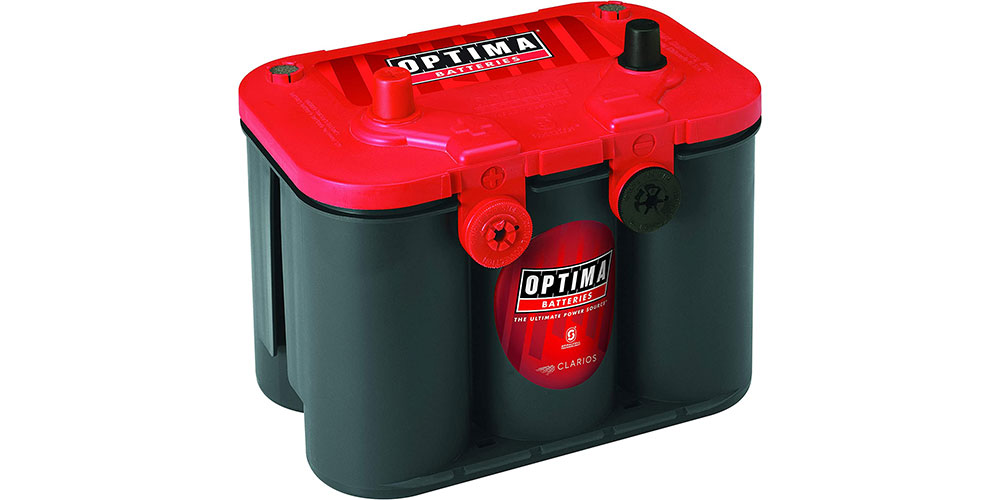Every day, you count on your truck to start properly. However, there will come a day when you turn the key, and the engine won’t turn on. Instead, a dead battery is indicated by a clicking of the starter solenoid and dimming of the lights. You might be running late for work, it might be snowing or raining, and you might have to call a tow truck to defibrillate your truck instead of continuing on your journey.
However, by adding a battery with higher endurance, the feared no-start scenario is usually avoidable. A battery that can tolerate numerous charges and discharges while still providing a jolt of cold cranking amps on a chilly morning.
There are numerous good choices available. We prefer absorbed glass mat (AGM) batteries because of their exceptional durability and almost spill-proof construction. Wet cell batteries are more affordable and more than capable of starting your truck; however, because they are more challenging to ship, we have not included them on this list. Here we analyze some of the best wet cell batteries for your truck, van, or SUV.
We created a reliable list of the top 5 best truck batteries, so you won’t have a hard time searching through all the options available today. Check out our list below.
#1 ACDelco Gold 48AGM

Brand: ACDelco
A reputable manufacturer of automotive parts is ACDelco. A seven-year lifespan is guaranteed by this Absorbed Glass Mat (AGM) battery, which also comes with a warranty. Between the gel mats, the battery uses a high-density paste. Improved charging capabilities and a longer lifespan are advantages of this design. Because this battery requires no maintenance, distilled water is not required to fill off the electrolyte. A vent cap prevents leaking while allowing built-up gasses to escape and air to enter—AGM batteries are less leak-prone versus traditional flood cell types.
A durable outer shell, high-density paste, and AGM format combine to provide a truck battery that is reliable and long-lasting. According to user reviews, it maintains a charge even when idling and can crank out up to 760 CCA (cold cranking amps) for starting in even the coldest conditions. Although traditional lead-acid batteries might be less expensive, we think that this ACDelco AGM unit offers better value overall.
#2 XS Power D6500 XS Series

Brand: XS Power
The XS Series of high-performance batteries has over 1,000 CA (cranking amps), which can start powerful engines, and enough RC (reserve capacity), which can power auxiliary components even when the engine is turned off.
This battery may be mounted at any position thanks to its flush-mount design and M6 bolt terminals. This is particularly useful for vehicles like trophy trucks, where you might want to arrange your batteries in odd positions for improved weight distribution. Regardless of group size or orientation, all batteries in the XS Power lineup are spill-proof and require no maintenance.
#3 Optima Batteries YellowTop Series

Brand: Optima
The YellowTop series from Optima Batteries is intended for use in heavy-duty trucks that include accessories such as winches, auxiliary lights, and other electronics. There are three spiral-wound battery lines from Optima: BlueTop, RedTop, and YellowTop. This item is on the list because it is made to withstand high electrical loads like those seen in trucks.
There are six spiral-wound lead plates in each battery, each with a positive and a negative side. Spiral-wound plates provide the advantages of density, shock resistance, and durability over flat plates. The battery can operate in practically any orientation thanks to its design, which also makes it maintenance-free and spill-proof.
The YellowTop range has remarkable cold-starting power with up to 980 CCA (cold cranking amps) and holds its charge up to twice as long as traditional flat-plate batteries. The Optima draws 25 amps and claims to have a reserve power of 140 minutes. The manufacturing of the Optima line is more complex compared to other batteries, which is its major drawback. This has an impact on the cost and frequently disrupts supply. Of course, their price is higher as well.
#4 Odyssey Automotive and LTV Battery

Brand: Odyssey Battery
With its compact light-truck battery, which has a strong cold-cranking amperage and is reasonably priced, Odyssey earns another spot on this list. The smaller Odyssey battery still has enough strength to start light trucks with its 850 CCA (cold cranking amps) rating. The manufacturer claims this battery would last up to 10 years with 400 or more cycles at an 80 percent depth of discharge, and it comes with a three- to four-year warranty. In addition, Odyssey asserts that this battery can be fully charged in four to six hours, making it the quickest recharging time of any equivalent battery.
It is a nice fit for work vehicles and off-road trucks due to its shock-resistant, non-spillable construction. This battery is a great option for vehicles that frequently stop and go because of its ability to cycle quickly and tolerance to repeated discharge. If the Odyssey has a flaw, it is that it is less shelf-stable compared to other batteries due to its reduced tolerance for extended periods of inactivity.
#5 Optima RedTop Battery

Brand: Optima
The Optima RedTop series is the company’s most popular offering. The spiral-wound cells were designed to deliver optimum starting power even in harsh conditions. They exhibit excellent impact and shock resistance in addition to impressive durability.
The RedTop provides 100 minutes of RC, and the truck battery will typically always have enough power to restart your engine. The spiral-wound lead plates’ high energy density is definitely worth noting. We particularly value the battery’s spill-proof construction. It can also be installed in practically any configuration. The complex design process that results in varying prices and availability is one of the battery’s flaws. However, the Optima RedTop is still one option that you can hardly go wrong with.
Essential Information About Truck Batteries
The vast majority of batteries used in vehicles are “flooded” or “wet” cell lead-acid batteries, which contain lead plates plus acidic electrolyte fluid. Although incredibly effective, this battery technology has certain disadvantages, not the least of which is that it contains a lot of sulfuric acid. As the electrolyte is lost due to evaporation as well as chemical reactions, some wet cell batteries also need to be periodically topped up with distilled water.
Battery technology known as “AGM” or Absorbed Glass Mat has recently become more popular. Lead-acid batteries, like AGM batteries, also contain fiberglass mat. It absorbs the acid and holds it there for a nearly spillproof configuration. They are better suited to today’s cars with automated start/stop technology and powered accessories because they have less internal resistance compared to wet-cell batteries. They are also more tolerant of repeated draining and charging. AGM batteries outperform conventional wet cell batteries in cold climates.
AGM batteries have several advantages, but their price is significantly more than that of traditional wet cell batteries. It’s quite important to note that the majority of vehicles with factory-installed AGM batteries aren’t made to function with any other kind of battery; check your owner’s manual to make sure.
Cold Cranking Amps
We would not bore you with the details of electrical theory; just know that the unit of measurement for the amount of electric charge moving per unit of time is called an amp or an ampere. Consider the analogy between electric current and water running through pipes; in this case, the units of gallons per minute could be compared to amperes. More water flow is obviously better if you’re using it to accomplish a task. Just as you cannot turn your starter motor with the battery from your TV remote control, neither can you turn the turbines at a hydroelectric power plant with a garden hose.
Trucks and Batteries
Given this information, it should not be a surprise that significantly bigger batteries produce more amperage. Additionally, because trucks typically have larger engines than cars do, starting a truck’s engine requires more amps due to the additional inertia, compression, internal friction, and oil drag that must be overcome. This is particularly true in cold climates because thicker oil and decreased battery performance are both factors.
The total amount of amps that a battery can discharge for 30 seconds at 0 degrees Fahrenheit while it maintains a voltage of at least 1.2 volts per cell is known as Cold Cranking Amps (CCA) (7.2 volts total for a 12-volt battery). Cranking Amps (CA) and Hot Cranking Amps are measured by battery manufacturers in the same way as cold cranking amps; the only distinction is the temperature at which the test is run. The cold cranking amps rating is likely the most significant because batteries are least effective in extremely cold temperatures. The more amps the battery has, the more work it can ultimately accomplish.
You don’t always need the biggest battery. A battery should typically provide one CCA for every cubic inch of engine displacement; for diesel-powered cars, this number should be doubled.
Disclosure: As an Amazon Associate, I earn from qualifying purchases made through links on this website.